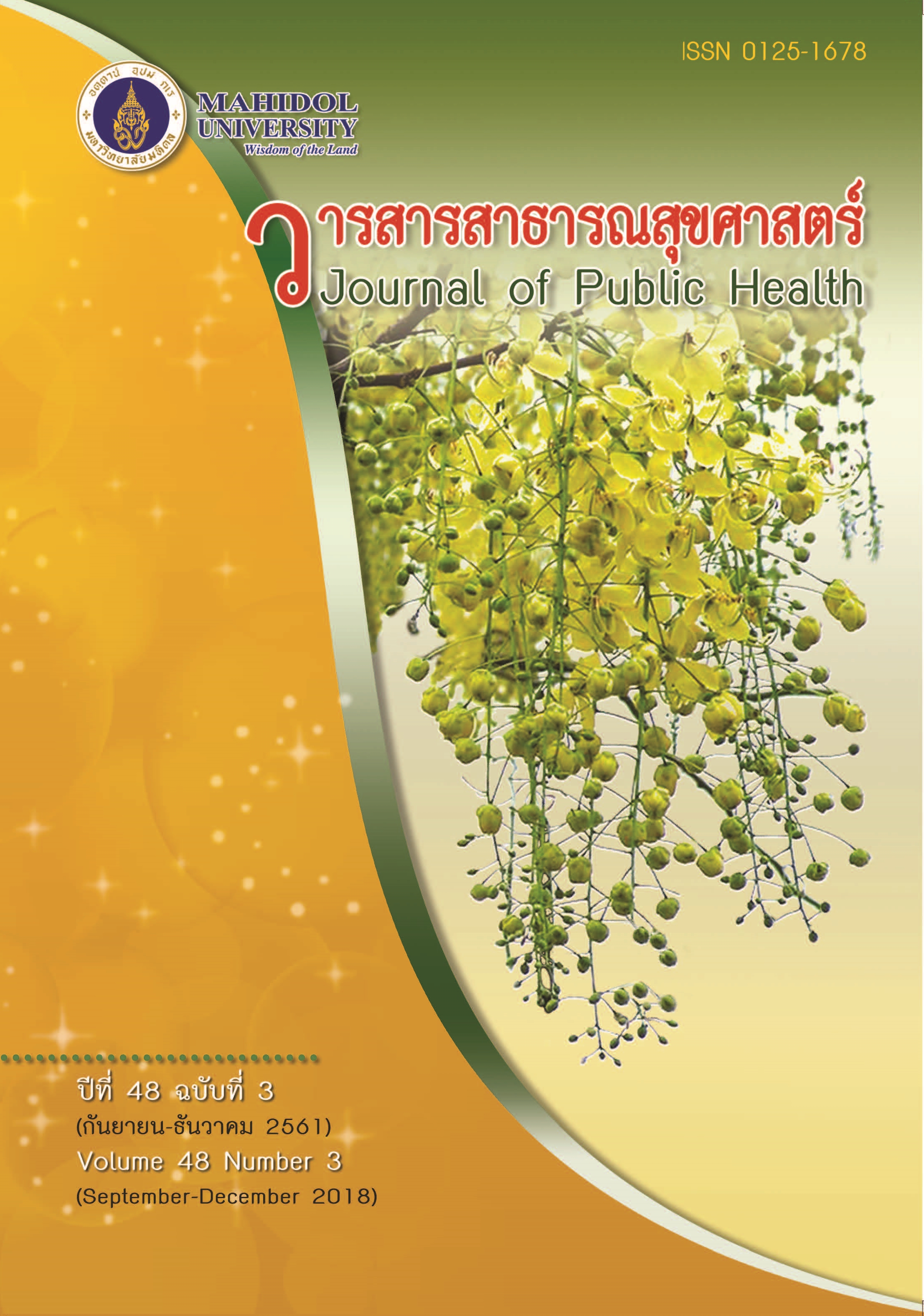The Nitrate Content in Some Green Leafy Vegetables with Different Cultivation Methods in Thailand
Keywords:
nitrate accumulation, green leafy vegetable, organic, hygienic, hydroponics, conventionalAbstract
High nitrate food products were reported to increase risk of cancer and many diseases. Vegetables were the main sources of nitrate intake in human. The objective of this study was to investigate nitrate contents (NO3-N) of four green leafy vegetables, namely Chinese kale (Brassica oleracea var. alboglabra), Chinese mustard (Brassica rapa var. parachinensis), Chinese cabbage (Brassica rapa var. pekinensis), and bok choy (Brassica rapa var. chinensis) grown in four different cultivation methods (conventional, hygienic, organic, and hydroponic methods). The nitrate contents (NO3-N) were analyzed by AOAC brucine colorimetric method between November, 2017 and February, 2018. Chinese kale, Chinese mustard, and Chinese cabbage were cultivated with hydroponic method that contained higher nitrate compared to that of the other cultivation methods (p < 0.05). Bok choy cultivated with conventional method revealed statistically higher nitrate content than that of vegetables cultivated with other methods (p < 0.05). Only hydroponic Chinese mustard (3,627 ± 900 mg/kg) and conventional bok choy (3,537 ± 817 mg/kg) had nitrate content exceeded the EU standard of 3,500 mg/kg. Among the four cultivation methods, hydroponics had the significant highest average nitrate amount (2,994 ± 958 mg/kg) (p < 0.05). With respect to types of vegetables, bok choy contained the significant highest average nitrate amount (2,634 ± 1,071 mg/kg) (p < 0.05). Since both cultivation method and type of vegetable affect nitrate accumulation of green leafy vegetables, consuming various vegetables in each meal may help to reduce the risk of over-exposure of nitrate to human.
Downloads
Published
Issue
Section
License
Creative Commons License CC-BY-ND


